Allan Bell a.k.a. Phyllis (left) with Sister Rock-On at David’s. Photo courtesy of Wendy Peacock.
Article originally published March 26, 2013 by The Grid online (thegridto.com).
In its brief lifespan, this ‘70s hotspot served as both a gay disco and punk-rock haven—before it all ended in a mysterious fire and murder.
BY: DENISE BENSON
Club: Club David’s, 16 Phipps
Years in operation: 1975-1977
History: The allure that the Yonge and St. Joseph area once held for creatures of the night has been detailed in a number of previous Then & Now pieces, including those about early 1980s venues Voodoo and Club Z. Here, we visit a prior decade to travel a short distance south, down a once-existing strip of the St. Nicholas alleyway, to a barely-there street called Phipps.
Moving and storage company Rawlinson Cartage constructed the building at 16 Phipps in the late 1890s. A small tunnel, thought to once hold a conveyor belt, connected it to the building directly north, at 11A St. Joseph. As with a number of neighbouring structures, it was also erected by Rawlinson.
In the early 1970s, 11A St. Joseph was home to popular all-ages gay male dance club The Manatee. Nearby Yonge Street bars The Parkside Tavern and St. Charles Tavern were gay hotspots, as was intimate Isabella Street disco Mrs. Knights.
Club David’s added new possibilities to the mix when Jay Cochrane and Sandy Leblanc opened it in the spring of 1975.
“Jay had already experienced many clubs in the U.S. and was meticulous about how he wanted things run,” recalls John Weber, the discotheque’s main DJ. “He wanted to create a safe atmosphere for everybody to enjoy.
“David’s was a step up on the décor [of the time]. It was really clean, they had sofas in there, and carpeting. You could go and actually sit on what felt like living room furniture. David’s had a billiards room too. It was the beginning of Jay’s vision of having a place where you could socialize and do more than just go and dance.”
Not licensed to sell alcohol at first, David’s opened doors to men aged 16-and-older. The club ran Friday through Sunday, with music heard until 6am on weekend nights. The crowds would soon grow far more mixed.
Why it was important: Although David’s was not the biggest or even busiest gay disco of its time, the club was one of the first to actually be gay-owned and so elaborately decorated.
The club was a sizable, two-level layout. Once opened, David’s heavy wooden door revealed a path that went up a few stairs, past a ticket booth, along a catwalk, and to your choice of billiards room or the main bar. In the upper part of the main room there was plenty of seating – sofas, tables and chairs, and booths alike. The floors were red carpet. Some of the walls were, in part, also covered in red carpet while others were heavily mirrored. It was, after all, the ‘70s.
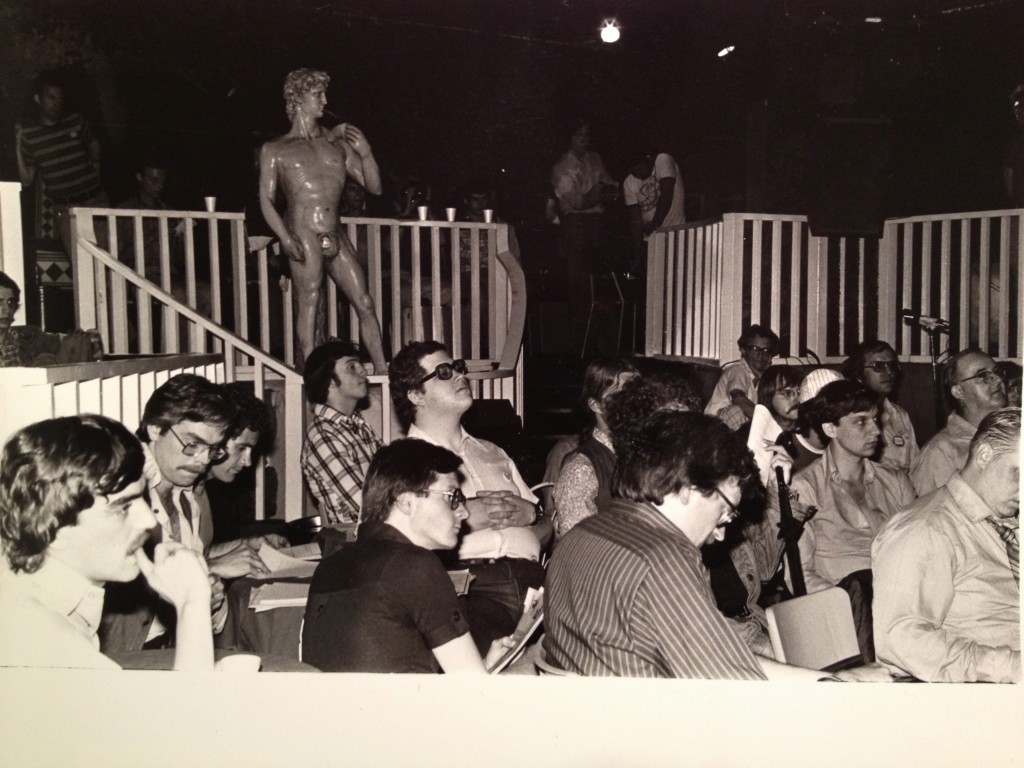
St. George riding all-candidates meeting at David’s, June 1977. Photo from The Body Politic, courtesy of Canadian Lesbian and Gay Archives.
Two winding staircases led down to the dancefloor. Most famously, the stairs also curved around the club’s star attraction: a fountain containing a larger-than-life, and, by many accounts, excessively well-endowed replica of Michelangelo’s David. There was also a stage, raised go-go platform, and a DJ booth that overlooked the dancefloor. Of course a large mirror ball reflected the pink, purple and multi-hued lights, and the sound system is said to have been quality. David’s also boasted a snack bar, pinball machines, and a high-tech coat check system, complete with revolving hangers.
Months after it opened, David’s adopted a somewhat radical door policy. While most gay and lesbian bars of the time were segregated by gender, and most social spaces were assumed to be either straight or gay, Club David’s advertised itself as open to all genders and sexualities. Some ads, in fact, promoted it as a bisexual club. A membership policy was adopted and bouncers were on hand to keep an eye out, but in general, people mixed freely and easily.
“When David’s became bi-gender, it attracted those people ‘on the fringe’ or ‘closet-y,’” says gay activist and senior Ken ‘Father’ Andrews, once a phototypesetter and board member of the Canadian Homophile Association of Toronto (C.H.A.T.). “A lot of women and men came out in that club.”
“One of the things I liked most about David’s was that I could see my female friends too,” says Weber, who got his start DJing the C.H.A.T. dances and was recruited to spin by David’s original soundman, Michael Roberts.
A 17-year-old Weber began to DJ at Club David’s in the summer of 1975.
Given its 16-plus-door policy, David’s was a haven for queer and questioning youth.
“David’s was home-away-from-home,” states Jacky ‘Jake’ Gabay, later to be known by the stage name of Vicki Sue. “It was difficult being out at that time, especially for teenagers. David’s was a retreat, a place where you could be yourself. I remember the first time I walked in; it was like being born again, among people like me. I was 16-going-on-17 at the time, and was enthralled by it all.”
Wendy Peacock was a Mississauga teen when she began attending David’s in 1976.
“I dated a boy, named Dave Soulsby, who worked there from 1976 to 1977,” Peacock begins. “He worked at the door, and was a go-go dancer. He was called the best robot dancer in the clubs, and even had a spot on CityTV’s Boogie show, dancing with his little brother.”
The two met at David’s, on an evening when Soulsby attended door.
“I had never been to a club so I was floored by the lights, and the sound,” she explains. “I went as much as possible. Guaranteed, I was there every Friday and Saturday night for about a year.
“I met a wonderful array of people. This was my first foray into the real world from my very suburban upbringing, and I couldn’t have asked for a better place to meet such diverse personalities. Everybody went to this club—straight, gay, bi, tough, not so tough, drag queens, transgendered people, pretty people, not so pretty people.
“There were a lot of young lesbians at the club,” Peacock adds. “Of course, they mostly went to the Cameo or other all-women clubs, but it was a young woman at David’s—she looked just like Jodie Foster—who made me dump my boyfriend.”
It’s especially difficult to resist a Jodie Foster-lookalike’s charms when the beats are pumping.
Thanks to John Weber, and his fill-in DJ Greg Howlett, David’s was a serious disco hotspot. Both men would go on to win the Billboard Disco Forum Award for ‘Best Regional DJ’ (Howlett in 1979, Weber in 1980), but before then, each would pack the David’s dancefloor as they played anthems like Silver Convention’s “Get Up and Boogie,”
“My favourite DJ at the time was Greg Howlett,” offers Weber during a lengthy phone chat. “I really admired his music and mixing.” (Visit the Then & Now Mixcloud page for live DJ sets by Howlett.)
Weber, who also DJed at The Manatee during this same period, was both a crowd-pleaser and trendsetter. As was then de rigueur, Weber would play a couple of slow songs every hour or so, but he excelled at blending danceable pop and rock—think Doobie Brothers’ “Listen to the Music,” and “Long Train Running”—with dancefloor soul and breaking disco anthems.
“The Supremes’ ‘I’m Gonna Let My Heart Do the Walking‘ and ‘He’s My Man‘ were huge at David’s, as were Vicki Sue Robinson, with ‘Turn the Beat Around,’ and Gloria Gaynor,” says Weber.
“Another song that was huge for us was “I Got Your Love” by a group called Stratavarious, which was formed by John Usry Jr. He worked back in the days with people like the O’Jays and the whole MFSB fold. He came to Toronto and formed the Stratavarious orchestra.
“Jay Cochrane allowed me to do a lot of things that a lot of other club owners would have shaken their heads at. He had vision, and allowed us to bring Stratavarious, a live disco orchestra, in to perform. That was quite something. I was also able to get Shirley & Company, who did the song “Shame, Shame, Shame,” to come and perform at David’s. Carol Williams, who was the first solo female artist signed to Salsoul Records and had done a disco version of the song “More,” also performed at David’s, and became a lifelong friend. Vicki Sue Robinson spent time at the club as a guest.”
Namesake female impersonator Vicki Sue, a.k.a. Jacky Gabay, was hired to perform at David’s by Tony Brown, who also took to the stage as Toni Brown.
“I auditioned for Tony in the summer of 1976, and performed “Blind Date” from Funny Lady,” recalls Gabay. “Little did I know that there were four other performers watching, including Michelle Ross. At the end of my audition they all applauded. Tony said to me ‘You’re not a drag queen like everyone else. You’re a performer, an actor.’ That was the best compliment I could have.”
Vicki Sue became part of the roster. Drag queens performed Friday nights at 2 a.m., with other memorable greats from the David’s days including Brown, Ross, Jackie Loren, Danny Love, Twilight, Jo-Jo, and Ronnie Holliday.
Vicki Sue, known for her sense of humour and original performances, won David’s Miss Starlight Pageant title in 1977, after performing solo sets on nights that included a Supremes tribute.
“People were in total awe the night that The Supremes—post Diana Ross—sat with me in the DJ booth, and watched themselves be performed by female impersonators,” describes Weber. “Tony Brown performed Diana Ross so gracefully, and had all of her movements and gestures down. That made this night an especially sweet moment because so many people loved and admired Tony.
“David’s was packed like a sardine can because word had leaked that The Supremes were going to be there. Tony asked if they would consider coming out of the DJ booth to say ‘Hi,’ and they did. People cleared a path a path from the booth, down the steps to the dancefloor, and Mary Wilson, Cindy Birdsong and Sherrie Payne took to the stage to greet everyone. It was one of those special club moments that was totally a David’s thing. Mary Wilson kept in touch with both Tony and I long after that.” (Brown, who went on to work and perform at clubs including Komrads, has since passed away.)
Peacock, a fan of David’s drag artists, recalls another favourite performer.
“There was this one queen there who I adored. His club name was Sister Rock-On, and his best stage act was an Elton John impression. He was beautiful as a woman, but Elton just blew you away. He looked exactly like him.”
For a period—especially most of 1976—Club David’s flourished. People flocked to the disco for its music, performances, and anything-goes reputation.
“I got hooked on the place because of the diversity; it was the craziest place in the world for that,” states Larry Adolphe, who’d initially gone to David’s because his good friend Gordon Bishop worked there as a manager.
“If somebody had walked in there with a cow, I don’t think anybody would have batted an eyelash.”
Adolphe, whose own music tastes leaned to rock, started working at David’s in the summer of 1977. He bussed, bartended, made popcorn for the snack bar—whatever was needed. By this time, the crowds had dwindled yet the club was open nightly.
David’s audience had shrunk for multiple reasons—including the opening of red-hot gay afterhours dance club Stages in January 1977.
Jay Cochrane left David’s behind early that year, and opened the large Studio II complex. Located at the northeast corner of Carlton and Church (where gay club Zipperz now sits), Studio II was a gay paradise, with multiple dancefloors, private rooms, a library, restaurant, movie theatre and more.
John Weber and his music went with Cochrane.
“My loyalty was with Jay, and I wasn’t personally interested in the direction that things were going with Sandy,” explains the DJ. “I believed in Jay’s vision more, so was more than happy to go to Studio II.”
Leblanc, with new American co-owner Mark Lefkofski, set about trying to keep Club David’s afloat. He built an adjoining disco, called The Garage, at 19 St. Joseph. When it didn’t take off, Leblanc converted The Garage into a restaurant, open 4 p.m. to 8 a.m. nightly. That did well, and soon people were walking through the doorway that connected the spaces.
David’s crowd now skewed heavily to those aged 22-and-under.
“Sandy really liked the street kids, and they liked hanging out there,” recalls Adolphe. “That was the scene at the time.”
People hung out at The Garage and danced all night in the disco, but the programming changed.
“With the opening of Studio ll, David’s lost a lot of its patrons, and the shows were changed to late afternoon on Sundays,” explains Gabay, who performed at the club as Vicki Sue until they no longer booked drag shows (He continued to perform until 1981, at clubs also including The Manatee, Carriage House, MayGay, Katrina’s, and Studio II.)
“David’s started catering to the punk crowd.”
Who else played/worked there: After the short-lived Crash ‘n’ Burn space ran its course in the summer of 1977, Club David’s became the unlikely home of Toronto’s early punk scene.
Filmmakers Tibor Takács and Stephen Zoller were the reason why.
Though he’d never set foot in David’s to dance, Takács was well aware of the club.
“David’s was sort of a big deal at the time,” he tells me in a phone call from California; “It was such a cool place – down an alleyway, with people always falling out onto the street. David’s was a very decadent, underground club that had a bit of a New York vibe to it. When David’s was in its heyday, I don’t think there was anything else like it at all in Toronto.”
He and Zoller had first approached Leblanc about shooting a scene for their first feature film, Metal Messiah, at David’s in 1976. They stayed in touch. Takács would go on to act as manager for pioneering Toronto punk bands Viletones and, to a lesser extent, Cardboard Brains.
“When we needed to find a venue for the Viletones to play in, because they were kicked out of everywhere else, we decided to go to David’s,” says Takács. “Sandy made us a good deal—we got the door and he got the bar.”
For the last four-to-six months of 1977, punk bands including Viletones, The Ugly, The Curse, B-Girls, Teenage Head, The Androids, and Cardboard Brains played at David’s once or twice a week.
“I would show up on Fridays or Saturdays to see or snap band photos,” says photographer and musician Vince Carlucci, guitarist and co-founder of Cardboard Brains.
“There was not that many bands initially – you could count all the Toronto punk bands with less than 10 fingers. Besides the Crash ‘n’ Burn, David’s was the venue for these new bands to play. There were a few gigs at The Colonial, but [it wasn’t] until 1978 and on when there was an explosion of venues and indie bands.”
Carlucci, who also documented early Toronto appearances by the likes of Patti Smith, has a soft spot for David’s to this day.
“David’s didn’t feel like a typical beer bar or club, like The Gasworks, or Yonge Station, or any of the other live music venues,” he describes; “It was kind of charming in a cheesy sort of way.”
While David’s was clearly in decline – fellow musician and photographer Don Pyle recalls that the fountain had long dried up and the club’s carpets were dirty and frayed – the club’s worn, wonky aesthetic, permanent stage, and sunken, pit-like dancefloor were perfect for the punks who played between 9pm and midnight.
“The vibe was pretty exciting, especially when bands like the Viletones played,” enthuses Carlucci. “Steven Leckie had a way of inciting kids – getting people pissed or dancing or moving. He was never much of a singer technically speaking, but had a great and sort of creepy persona onstage.
“When Teenage Head was on, the place would typically be packed, and there was always a feeling that a riot may break out – what with all the booze and dope that was being used, and the odd mix of people. It was just not that common in ‘77.”
While the Viletones played at David’s more than any other band, Leckie recalls one especially magical night at the ‘punk palace.’
“The Poles, Teenage Head and Viletones were all on the bill,” Leckie begins. “It was like a vacuum; that was as tight as you got. I’d hear female singers later, like say in The Adverts, and think ‘Man, she doesn’t come close to Michaele Jordana.’ Teenage Head were off the map, in my opinion. They were as good as it gets. They could have been bigger than Cheap Trick.”
While footage and interviews from this show were infamously reported by punk-fearing CBC host Hana Gartner, the nascent scene at David’s was lovingly recorded by people like filmmakers Colin Brunton and Kire Paputts who shared the footage below. (Their detailed documentary about the early days of Toronto punk, The Last Pogo Jumps Again, contains additional footage shot at David’s and is excellent.)
“David’s was an important lily pad you needed to jump onto to continue the arc of punk,” says Leckie, who sometimes DJed between bands too. “Without David’s being there, there would have been a real gap after the close of Crash ‘n’ Burn, and before the opening of The Edge. I felt absolute freedom at David’s and with Sandy. It was beautiful.”
As a venue, David’s also underscores a fact about pioneering punk scenes in Toronto and New York alike.
“The earliest days of punk had deep roots in gay spaces as safe havens or as accepting of other outsiders,” states Don Pyle, a gay man who came up in the punk scene, and came out in his later teens.
“I was only 15 when I first went to David’s and was still closeted and fearful so going there was a threat to my ‘secret,’” says Pyle, who nonetheless saw many bands at 16 Phipps (some of Pyle’s photos taken at David’s are found in his 2011 book, Trouble In the Camera Club).
Pyle points out that there were a number of “visible gays in the artier side of the punk scene—in bands like The Dishes and Drastic Measures.”
Toronto artist Bruce Eves, also co-founder of CEAC (Centre for Experimental Art and Communication), where the tiny Crash ‘n’ Burn once ran, expands on this.
“The ‘punks’ were largely art students or recent grads so the scene was, relatively speaking, fairly integrated for the time. I’d never made any secret of the fact that I’m a gay man, and had never felt threatened in any way. Some of the bands attracted a more hardcore following, but I never felt hassled.
“All this said, I would say that the punk and disco scenes were pretty segregated. Gays would go to punk concerts because the scene was hot, but not the other way around.”
While most of the people I speak with say that the punk kids and disco dancers who did come together at David’s mixed comfortably (“There was this kind of respect and camaraderie betwixt the punks and the gay crowd,” says Carlucci; “Both cultures were kind of loners, rebels and rejects in a way.”), Eves’ story about one of the few times he went to David’s also speaks volumes.
“I don’t remember who was playing; it was probably the Diodes because we were friends, had collaborated on a few art projects and I was a fan,” says Eves. “During a break between sets, I was chatting up a guy I was interested in, and we kissed. This guy nearby freaked out and punched me. There was blood everywhere. I was hauled out through the restaurant, past shocked patrons with forks suspended midair. Evidently a gang of punk girls beat the shit out of the guy in revenge – my own little Altamont. I still have the scar to prove it.”
Still, the staff at David’s was just as mixed as its clientele. Leblanc also hired people from the punk scene.
“Waiter Randy Roudette was someone I came to know from just being around the scene,” offers Pyle. “He had a T-shirt that said ‘Mr. Shit’ on it the first time I recall seeing him. It was the name most people knew him by.”
Leblanc also took to booking bands. A few interviewees mention seeing Rough Trade at David’s. Disco acts still performed on occasion.
“At a certain point, Sandy started booking his own shows,” says Takács. “We were a little pissed off at him, but really, we’d run the gamut of Toronto punk groups, and he was looking for new acts. He brought in these guys from Detroit. They were a very clean-cut, new wave pop band, called The Romantics. Eventually they became kind of famous. I remember walking in and hearing “What I Like About You,” and thinking ‘Fuck, these guys are commercial. This is a hit song man.’ The first time I ever heard that song was there.”
What happened to it: Club David’s burned in a fire following a New Year’s Eve punk show on December 31, 1977.
“We were one of the three unfortunate bands to have played the night the club burned down,” says Carlucci. “It was the final gig at Club David’s.” (Carlucci has written about this night in a memoir in progress, tentatively titled I Was A Cardboard Brain. He continues to take and exhibit photos, performs with the band Station Twang, and also blogs regularly.)
Cardboard Brains, along with members of Viletones and The Ugly, lost a lot of gear in the fire, which remains a mystery to this day.
“There were some rumours as to whether or not it was an insurance thing, but I was always skeptical of that because that was Sandy’s life,” says Adolphe, who worked at David’s that evening. (He now owns L&J Cycle on Davenport.)
“Sandy liked the kids, and he actually lived there—he had a loft that in the building, right above the snack bar. I think in some ways, he had more to lose.
“After it burned down, he still tried to help us out by giving Gordon and I shifts, pulling down smoke damaged drywall and cleaning the place up. Sandy had a big heart. It’s quite possible that the fire was staged, but that just didn’t seem to fit with who Sandy was.”
Takács also has his doubts.
“Something I remember very distinctly from that night is that people were throwing their cigarette butts on the wooden dancefloor. I went around stomping them out at points.”
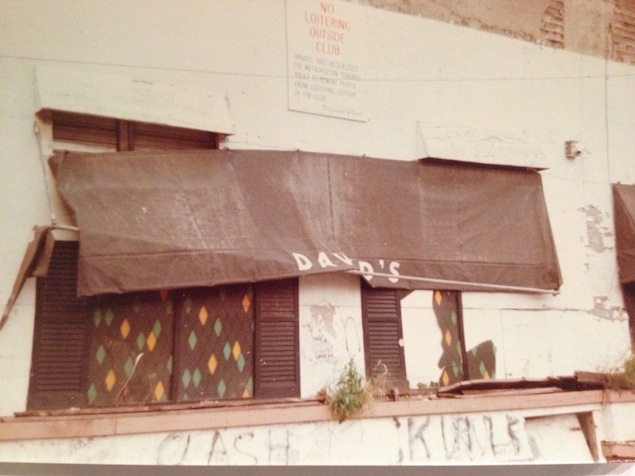
The David’s site as it appeared in 1979.
Photos by Joan Anderson, courtesy of the Canadian Lesbian & Gay Archives.
Now splitting his time between Toronto and Los Angeles, the director of films including The Gate, Sabrina the Teenage Witch, and Spiders 3D recalls trying to meet with Leblanc many months after the fire.
“I remember going to Sandy’s to discuss the insurance. We knocked on the door, went back a few times, and wondered ‘What the hell? Where did Sandy disappear to?’”
Leblanc was murdered in September 1978. The Toronto Star reported that he’d been stabbed more than 100 times. No one was ever charged.
“There were suspects, but no proof,” says Ken Andrews, now retired and active as a community volunteer as he nears age 79.
“A friend discovered Sandy’s body when paying a visit to his apartment. He called police, of course, and a certain then-homicide detective by the name of Julian Fantino was an investigator. My friend thought it odd that a follow-up interview never took place.”
A few years later, former David’s co-owner Mark Lefkofski, who also co-owned Detroit men’s bar Menjo’s for a period, was murdered in that city.
“It was absolutely devastating, the way that Sandy was murdered, but at the time, it was seen as possible that he’d brought the wrong person home,” recalls John Weber, who went on to DJ at clubs including Sutton Place disco Stop 33, Space disco and The Barn (he’s now retired).
“But then, when it came to Mark also being murdered, it seemed like there was something else involved there. Maybe bikers or mob money – it seems we’ll never know.”
16 Phipps remained unused for years after the fire. In the mid 1980s, it was reborn as gay dance club Le Mystique. From 1995 to 1997, it was the home of house-centric gay afterhours club, JOY while at other points in the ’90s the building hosted underground warehouse parties and raves.
The building was torn down more than five years ago. In its place stands the 20-storey condo build on the south side of Eleven Residences at 11 St. Joseph. The St. Nicholas alleyway no longer extends that far north; it has been filled in by ongoing construction of Five Condos at Yonge and St. Joseph.
Thank you to participants Bruce Eves, Don Pyle, Jacky Gabay, John Weber, Ken Andrews, Larry Adolph, Steven Leckie, Tibor Takács, Vince Carlucci, Wendy Peacock. Thanks also to Alice Lipczak, Andrée Emond, Caroline Azar, George Fichna, Helen Lenskyj and the Canadian Lesbian & Gay Archives, Vince Degiorgio, and to Colin Brunton and Kire Paputts, producer/directors of The Last Pogo Jumps Again, for their suggestions and sharing of resources.

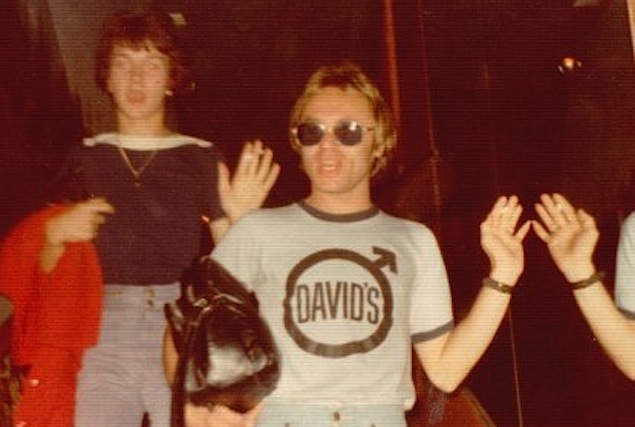
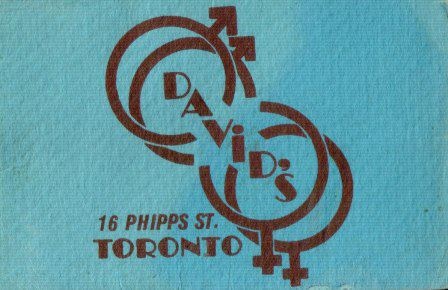
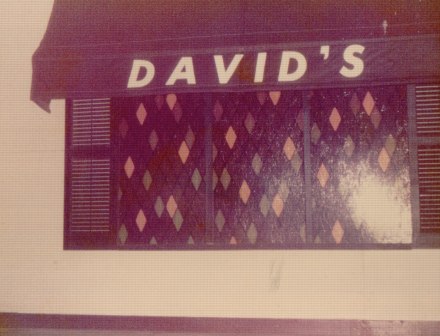
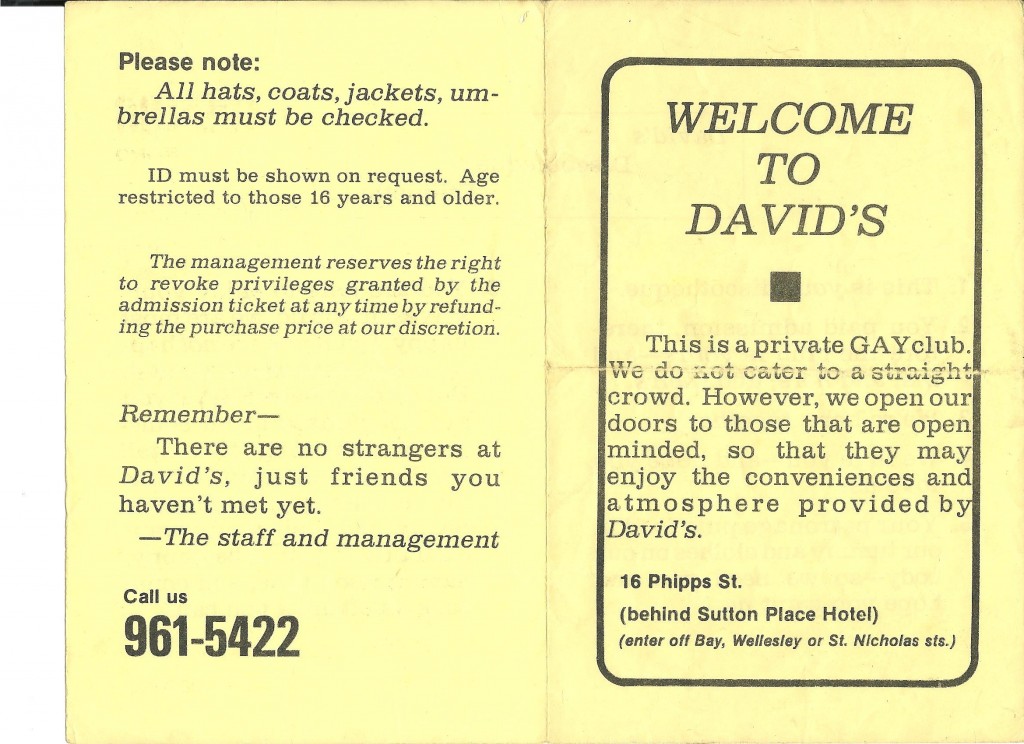
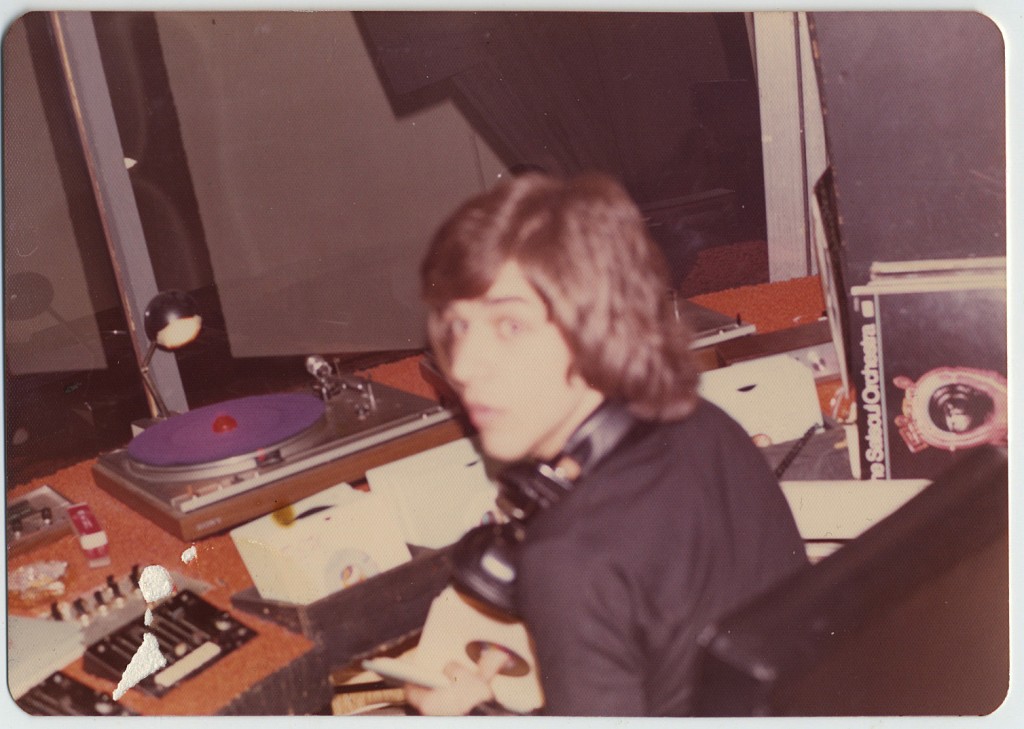
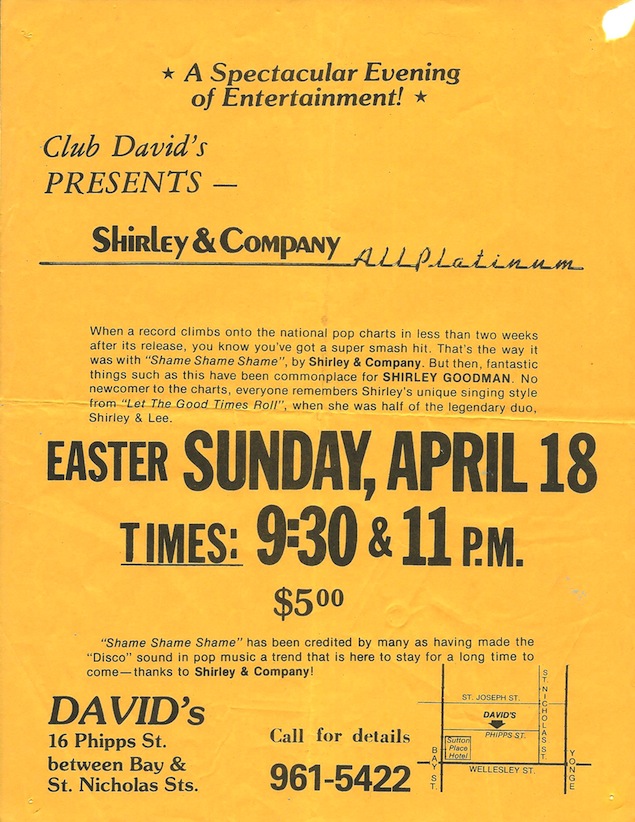
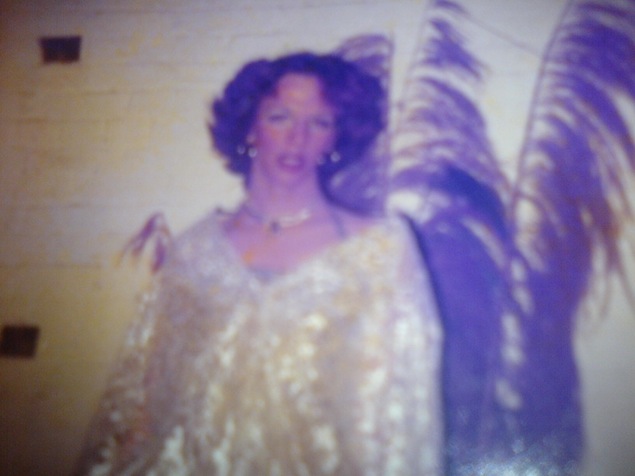
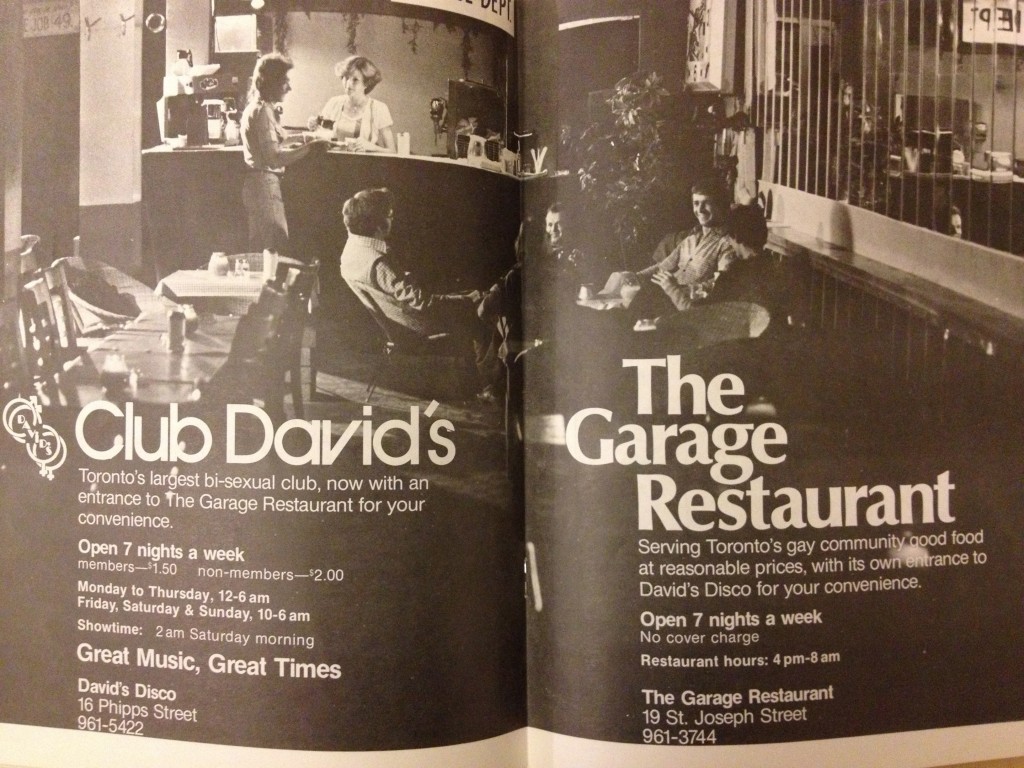
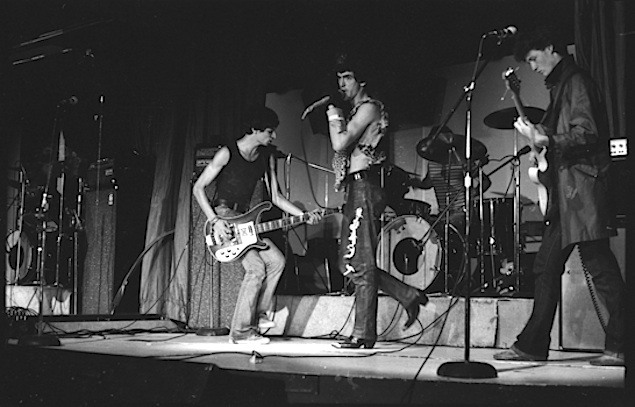
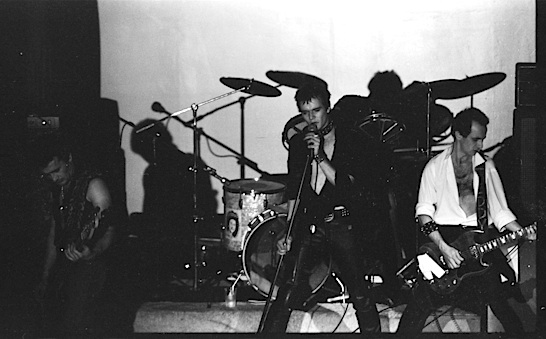
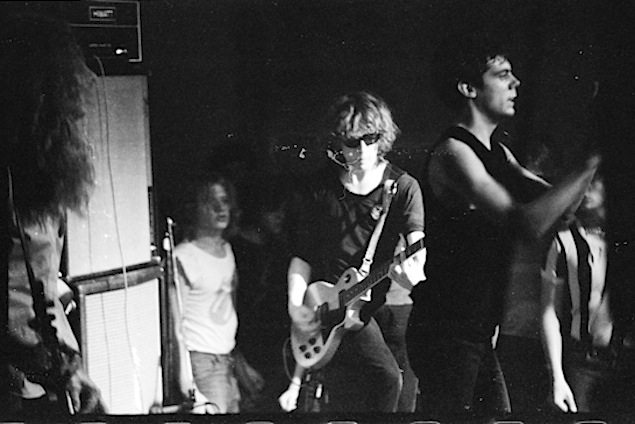
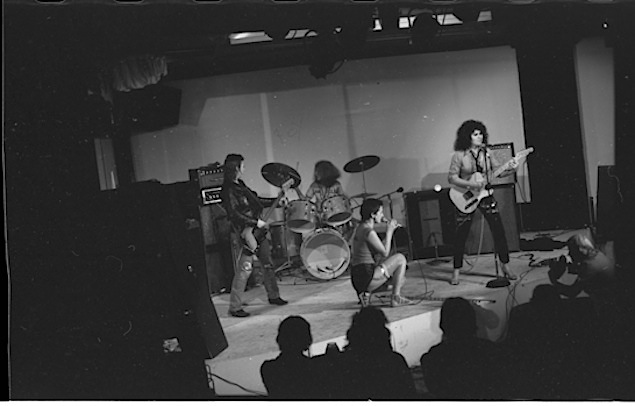
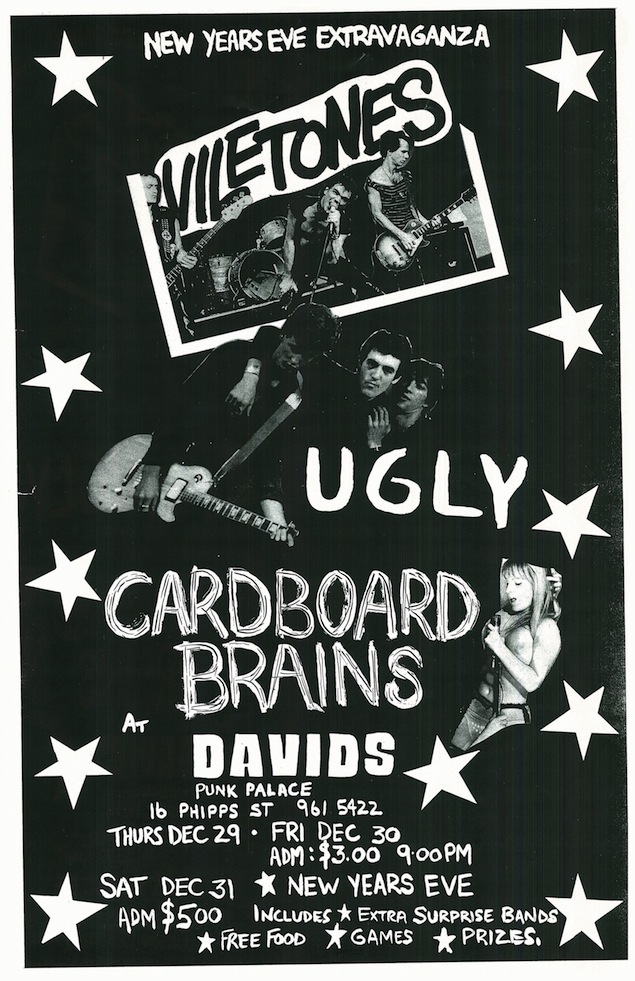
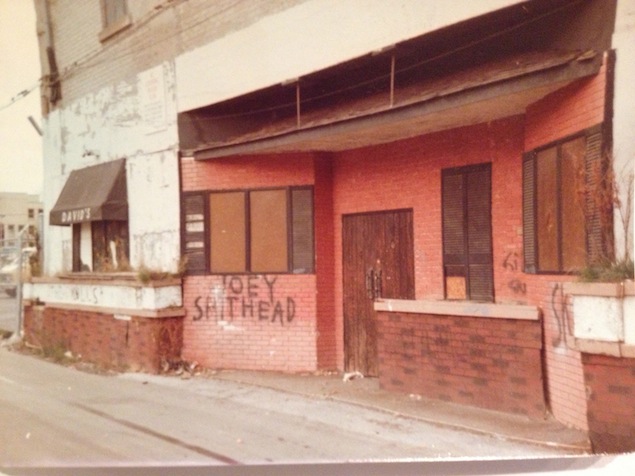
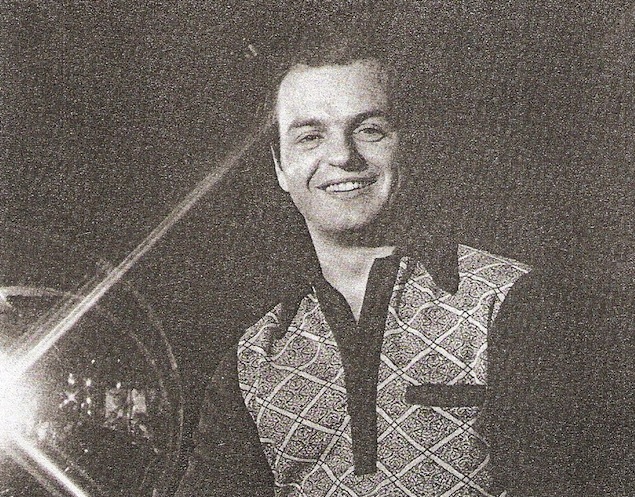
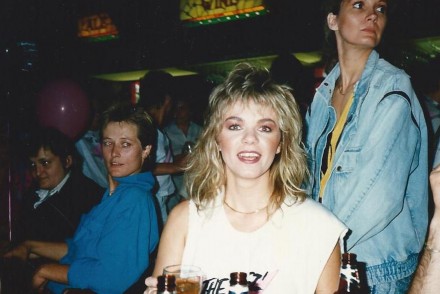
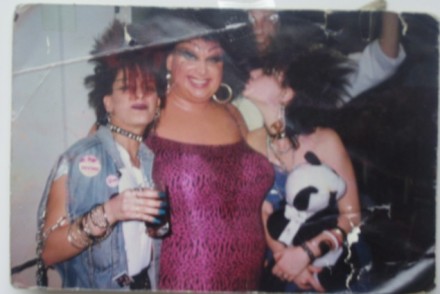
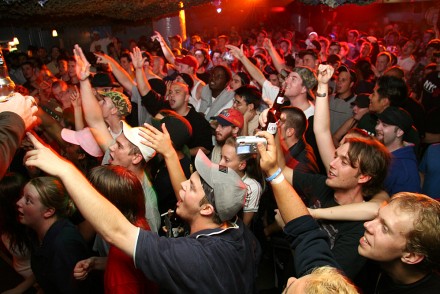

12 Comments
I went to David’s many times did my first drag show their. I know John Weber and Greg Howlett was room mates with them both. Went on to perform with the Great Imposters for awhile. Retired now but what Great times and memories back then.
Hi Ronnie
It’s Chris would love to hear from you
416 8802617
[…] feature Metal Messiah, in which John Paul Young had a role. Gotta say, the Club David’s story, as told in this piece originally published in the Grid, is a heck of a read. It features Takács and Carlucci as interview subjects and includes […]
[…] and new-wave dance club. Sets of new wave could be heard at nearby gay clubs like Stages and Club David’s; The Edge was ground zero for pioneering live music; and Nuts & Bolts, Twilight Zone, […]
I would like to know if John Weber or anybody else has any idea what happened to the disco boat that hung over the dance floor at the Manatee or for that matter the statue of David from David’s. I remember the Voice of The Theatre speakers at the Manatee. I was never in David’s because it closed before I came out. I was at the Manatee and Studio II.
I know that John Weber is still alive because I heard him on a radio blog which is why I ended up finding this incredibly well-done write-up. Anything you can tell me would be greatly appreciated.
Thank you.
John Bailes.
lookin’ for real ’70, ’80 disco pioneers to do special disco history, serious interview for my eBook: http://disco-dj-history.blogspot.com/
I remember coming out at 15 at the end of 1975. The Manatee was the place to be for me. There was nothing like the Toronto scene in the 70′s and 80′s. Being so called “fringe” and being considered “degenerates” and “freaks” by the mainstream at that time acted much like a catalyst to unite gay bi straight trans community. It was an incredibly exciting yet dangerous time for gay people. The music and the clubs while constantly being harassed by toronto’s police while sometimes deemed dingy also could be creative. Anyone remember Jo Jo’s and the Carriage House)? Toronto actually had a huge budget for their so called “morality squad” (fuck u Sargeant Laplante. I beat your charges thanks to gay court watch).
I worked at Cornelius,Chaps, and later the S & M (stand and model) bar Woody’s. I also had the great pleasure of having to work at Chaps and during set up talk with and listen to Greg Howlett set up. There was no other DJ that could come close to what this man did creatively in the DJ booth. This man had balls and was also the nicest sweetest man. So sad to see he had passed one day after my birthday in 1992 . Greg u r missed dearly and thanks for the good times and the good heart. ❤️
Hi know Greg well was room mates with him. Yes he is missed dearly
[…] Source: Then & Now: Club David’s – Then and Now: Toronto Nightlife History […]
David’s was a blast during the summer of ’77. Coming from rural Nova Scotia to the gay scene downtown was a real eye-opener. Marching down Young Street against Anita Bryant, clubbing at The Quest, Maygay, Manatee and David’s. I remember when the transition to more punk was happening around September at the club. Jumping up and down slamming into each other doing a dance called ‘The Pogo” to ‘The Poles – CN Tower’ and getting chased around by Sister Rock-On (I was 18 and cute) Wow.. good times.
looking to reestablish contact with Sister Weber, DeeJay John Weber. Feb 2015! Anyone with contact info or can forward this to John directly would be appreciated.
All comments in the string below have been republished from their original appearance on The Grid website. We’re including the readers’ comments as they add to these Then & Now stories. We look forward to reading new comments here as well.
Ken Kuhl
Great series, Denise! Looking forward to more, especially Trax 6:12 pm on March 20, 2014
larry s.
My favourite club EVER. I saw a lot of great bands there. One of the most unforgettable: The Skulls from Vancouver( later known as DOA!).Being underage at the time, I could not believe that I was able to buy a beer, no questions asked! What a time that was! Thanks for that wonderful and important article. 9:43 pm on November 7, 2013
Linda Wayne
I was still in high school when I discovered Davids. Some people at the “other” bi bar Sugars told me about the place and once I went, I knew it was my new home. I can remember many early Sunday mornings when the club emptied out and a group of us strutted down Yonge to College in full drag to get breakfast and harass the bleary patrons and tired staff at Frans. My sweetie at the time, Kathy/Jimmy was what what we would now call a drag king or was perhaps transgender, proving the openness of the place since ze was welcome to perform along with Michelle and the other drag artists. I was there the night The Supremes performed. It was electric. Not only was the bi scene just breaking open at that moment but it was the beginning of night clubs where you paid a cover to listen to records as opposed to live bands. Many people didn’t understand why we would do this, but disco music and dancing to heavy beats quickly created its own scene. Odd to think of such a commercial music as disco as ever being underground. It had that Andy Warhol feeling to it, glitzy and glamorous yet back alley and edgy. I don’t know of any club that has captured it since. 4:35 pm on October 16, 2013
Betty
Well well well now i know what all the fuss was about…i get to be the first person to leave comment(deadpeoplersmiling)lol,I never went to David’s it had just closed when i came out at the Manatee,quite frankly i wished people would’ve just shut up about David’s at the time,Weber was cutie back then & miss rock-on with her dragbag memories lol nice article filled in some things for me.
Betty 2:46 pm on July 29, 2013
jake
I love David’s and the Manatee….two different atmospheres…. 4:13 am on October 7, 2013